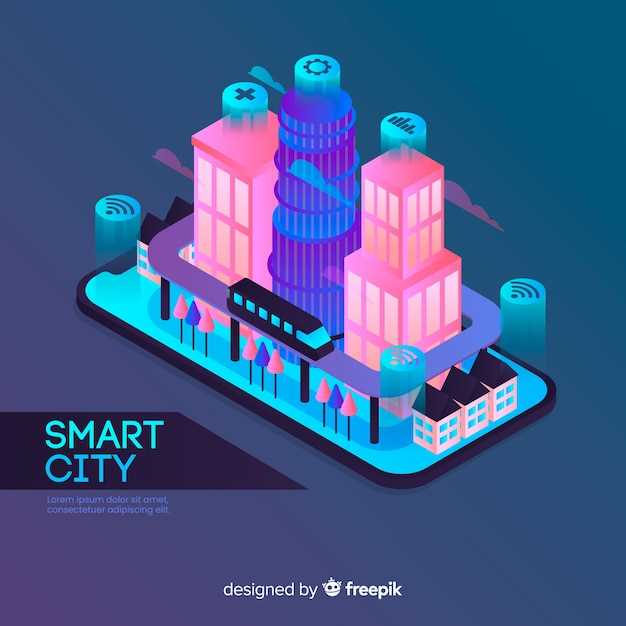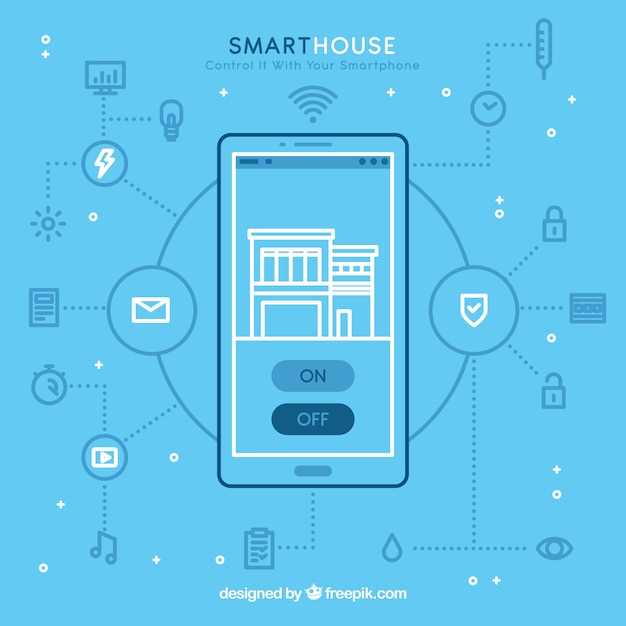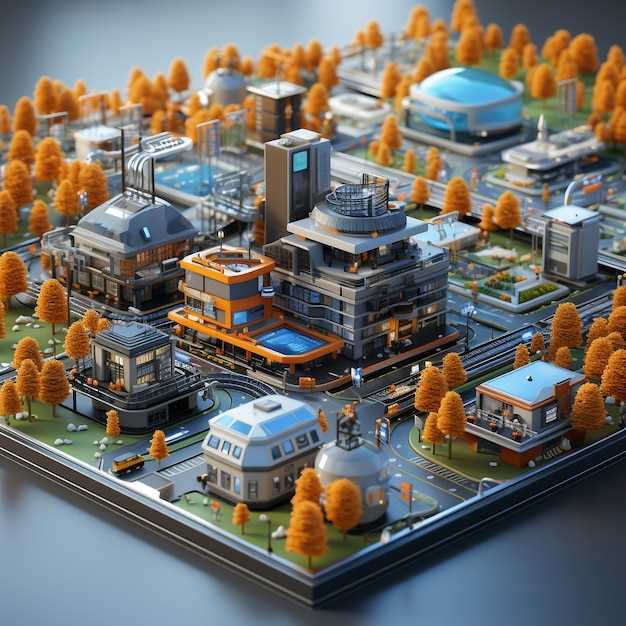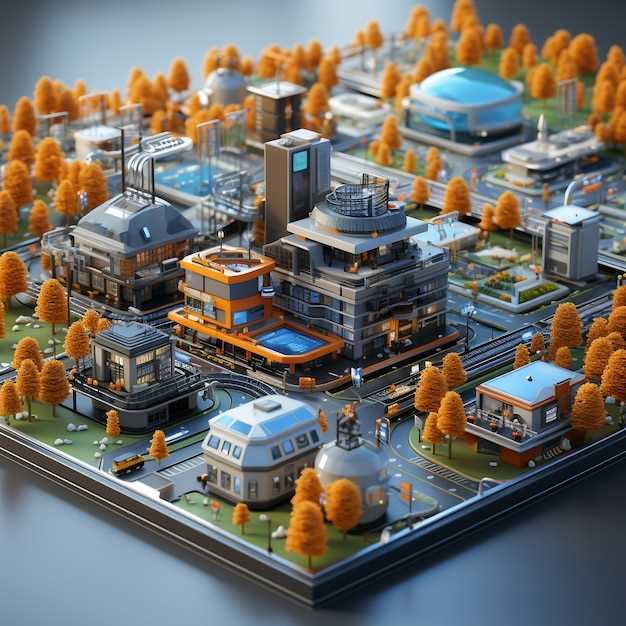In recent years, a transformative wave has reshaped how industries operate. A network of interconnected devices now streamlines processes and enhances efficiency. Innovations foster collaboration among various sectors, ushering in a new era of opportunities. Each device contributes unique data, allowing companies to make informed decisions rapidly.
Moreover, insights drawn from data facilitate proactive solutions to challenges. Real-time information enhances responsiveness to market demands, creating a competitive edge. Devices communicate autonomously, reducing the burden on human resources and ensuring consistent performance. This synergy results in a dynamic environment where adaptation becomes seamless.
As more organizations embrace this connectivity, a profound shift occurs. Traditional models give way to agile strategies that prioritize innovation and customer satisfaction. The growing significance of sustainable practices further drives this momentum, compelling companies to integrate smart solutions into their operations. It’s not just a matter of efficiency; it’s about redefining success in the digital landscape.
Looking ahead, the horizon brims with promise and excitement. Emerging technologies will continue to enhance operational capacities and user experiences. Companies ready to harness this potential will undoubtedly thrive amidst evolving consumer expectations. Ultimately, this interconnected ecosystem will determine how enterprises navigate challenges and seize new opportunities.
The Impact of the Internet of Things on Business

Modern technologies are reshaping how companies operate. Sensors, devices, and smart systems communicate more efficiently. This transformation leads to improved decision-making and innovative strategies. Efficiency enhances, and resources are better utilized.
In a world where connectivity reigns, data flows seamlessly from various sources. Real-time insights empower firms to respond quickly to market demands. Companies gain a competitive edge through optimization of processes, resource management, and customer engagement. These advancements redefine traditional practices and create new opportunities.
From manufacturing to retail, organizations harness this connectivity for significant gains. Operations become more streamlined, reducing costs and waste. Predictive maintenance enables firms to foresee issues before they escalate, leading to greater uptime and productivity. As technology evolves, potential expands dramatically, proving that adaptation is crucial for success.
Ultimately, the integration of smart devices into everyday activities drives strategic innovation. Organizations learn to leverage vast amounts of data effectively. Enhanced customer experiences are crafted through tailored offerings and personalized interactions. This evolution signifies not merely a shift in tools but a total reimagining of possibilities.
Applications of IoT in Various Industries

Numerous sectors today harness innovative technologies to drive efficiency and progress. These advancements empower organizations to improve their operations. Streamlined processes, enhanced decision-making, and real-time data acquisition are just some of the gains. Different industries are embracing unique methodologies, transforming their traditional frameworks.
In healthcare, connected devices monitor patient conditions continuously. Wearable sensors provide doctors with vital signs information. This leads to timely interventions and better patient care. Moreover, healthcare facilities optimize resource allocation, reducing costs while enhancing service quality. The integration of smart devices in this field revolutionizes how professionals approach treatment.
Manufacturing sectors benefit from real-time data collection and analysis. Smart machinery communicates status updates, detecting potential failures before they escalate. This predictive maintenance reduces downtime significantly, boosting overall productivity. When production lines operate with minimal interruptions, the output aligns closely with market demands. Such efficiencies lead to higher profitability for manufacturers.
Logistics and supply chain management also see remarkable advancements. Connected vehicles track shipments, ensuring timely deliveries and transparency. With GPS and RFID systems, companies monitor goods in transit, enabling optimized routes. This technology reduces fuel costs and enhances customer satisfaction due to precise arrival estimates. Furthermore, real-time insights allow businesses to respond swiftly to unexpected changes.
In agriculture, smart farming techniques are becoming increasingly popular. Sensors help monitor soil moisture levels, weather patterns, and crop health. This data allows farmers to make informed decisions about irrigation and fertilization. As a result, yields improve while minimizing resource waste. Such intelligent farming practices contribute to sustainable agriculture in the long run.
Retailers adopt smart inventory management solutions that automate restocking processes. Connected shelves alert staff when items run low, ensuring customer needs are met. This not only enhances shopping experiences but also reduces excess inventory. Businesses can utilize data analytics to understand consumer behavior, personalizing offerings for greater engagement. Through these innovations, retail is undergoing a significant transformation.
Overall, diverse industries showcase an array of capabilities brought forth by connectivity. Each sector tailors solutions to fit its specific requirements, realizing the potential benefits. As innovations continue to evolve, opportunities for growth and enhanced performance will expand. The future holds promising advancements, driven by interconnected devices that redefine productivity across various landscapes.
Smart Manufacturing and Automation
Modern production processes are undergoing a dramatic transformation. Enhanced connectivity and intelligent devices play a pivotal role. This evolution reshapes how goods are created, managed, and delivered. Efficiency and precision reach unprecedented levels, creating new standards.
- Real-time monitoring leads to immediate adjustments.
- Data-driven insights empower better decision-making.
- Resource management improves significantly.
- Energy consumption shows remarkable reductions.
With interconnected systems operating cohesively, companies can swiftly respond to market demands by optimizing workflows, ensuring that production lines adapt seamlessly to fluctuations in order volumes, which ultimately enhances overall responsiveness to customer expectations.
- Increased production speed.
- Enhanced product quality.
- Minimized downtime through predictive maintenance.
- Lower operational costs.
Automation technologies facilitate the reduction of human error and allow workers to concentrate on higher-value tasks, resulting in a workspace that fosters innovation and creativity while also ensuring a safer environment as machines assume repetitive and potentially hazardous jobs.
Looking ahead, advancements in artificial intelligence and machine learning promise even greater enhancements. These technologies will integrate deeper into manufacturing processes, leading to smarter factories where machines not only communicate with each other but also learn from their environments, adapting dynamically to new challenges and opportunities.
Healthcare Solutions and Remote Monitoring
Transforming healthcare is essential in today’s fast-paced society. Remote monitoring has become a game-changer, bridging gaps in medical care. Patients gain advantages with constant health tracking. Healthcare providers can respond quickly to evolving situations. This innovative paradigm allows for real-time data sharing.
Through smart technologies, individuals can access vital information from anywhere. Wearable devices play a significant role in this evolution. They monitor heart rate, track physical activity, and even detect falls. Such advancements ensure proactive health management.
- Chronic disease management.
- Post-operative care.
- Medication adherence monitoring.
- Telehealth services.
- Emergency response systems.
These solutions provide continuous observation and can improve patient outcomes significantly; by identifying medical issues before they escalate, healthcare professionals can implement more effective interventions, thus enhancing the overall quality of care. Increased access to healthcare services is a notable advantage for both urban and rural communities.
Patient engagement has also seen remarkable growth due to these technologies. People become more involved in their health journeys, feeling empowered to make informed decisions. Alerts and reminders support adherence to treatment plans, reducing hospitalization rates. Moreover, data analytics offers insights that streamline healthcare processes and improve resource allocation.
As we move forward, innovation plays a crucial role. Advanced sensors and artificial intelligence will undoubtedly revolutionize remote healthcare. The focus will be on creating personalized solutions tailored to individual needs. This paradigm shift aims to enhance overall well-being, leading to healthier populations across various demographics.
In summary, remote monitoring and advanced healthcare solutions are transforming patient care. Enhanced efficiency, improved access, and enriched patient experiences highlight this revolution. As technology continues to evolve, the possibilities within this realm are limitless, promising a brighter and healthier future for all.
Supply Chain Optimization
Modern supply chains undergo remarkable transformations driven by technological advancements. Efficiency and agility have become paramount in this landscape. Companies strive for real-time data insights, enabling swift decision-making. Collaborative efforts among partners play a crucial role in enhancing overall performance. As a result, organizations gain a competitive edge, responding effectively to market changes.
Tracking assets throughout various stages helps reduce delays. Additionally, managing inventory efficiently minimizes costs while maximizing availability. Enhanced visibility offers a clearer view of potential disruptions, allowing preemptive action. This interconnectedness fosters resilience in operations.
Utilizing data analytics reveals patterns previously hidden in traditional systems. When integrated seamlessly, these technologies can collaborate, leading to significant improvements. Such advancements empower businesses to optimize resource utilization, streamline communication, and strengthen relationships with suppliers and customers alike.
| Area | Traditional Method | Optimized Approach |
|---|---|---|
| Inventory Management | Manual Tracking | Automated Real-Time Monitoring |
| Logistics Coordination | Scheduled Dispatch | Dynamic Routing Based on Demand |
| Supplier Interaction | Periodic Updates | Continuous Communication Platforms |
Adopting innovative approaches ensures agility and responsiveness, qualities essential in today’s dynamic environment. Future initiatives likely focus on further integration of advanced technologies, reinforcing the idea that transformation is continuous. Staying ahead requires willingness to embrace change while valuing collaboration across networks.
Smart Retail Experiences
Modern retail landscapes are transforming dramatically. New technologies are reshaping customer interactions. Shoppers now demand more engaging experiences. Retailers are responding with innovative solutions and strategies. It’s all about creating that perfect blend of convenience and personalization.
Utilizing data analytics and real-time insights, retailers can cater to individual preferences. These advanced systems track customer behavior and tailor offerings accordingly. Observing patterns allows businesses to predict trends and optimize inventory management. This means that customers discover products they actually want to buy while enjoying a hassle-free shopping experience.
Furthermore, smart devices enhance in-store interactions through various means. For instance, virtual assistants can guide shoppers to desired items effortlessly. Augmented reality applications enrich product exploration by allowing virtual try-ons or 3D visualizations. Such immersive experiences captivate customers in new ways.
With these smart tools, loyalty programs can also evolve significantly. Tailored promotions become a reality, encouraging repeat visits and fostering brand loyalty. Customers appreciate personalized rewards that resonate with their shopping habits. This level of engagement strengthens relationships between brands and consumers.
Looking ahead, trends indicate an increased focus on sustainability and ethical practices. Retailers will likely prioritize eco-friendly solutions alongside technological advancement. As consumers become more environmentally conscious, businesses must adapt to these shifting values. The future of retail promises a synergy of innovation and responsibility.
Benefits and Future Trends of IoT

Deployment of interconnected devices brings forth numerous advantages for various sectors. Efficiency increases, leading to significant cost reductions. Organizations can harness data like never before, enabling informed decision-making. Enhanced customer experiences emerge through tailored solutions. Innovations reshape traditional operational paradigms, paving pathways to new opportunities.
As these technologies evolve, several emerging patterns are becoming evident, transforming how industries operate. The ability to analyze vast amounts of data in real-time will continue to redefine competitive landscapes. Enhanced connectivity is driving smarter infrastructures, and businesses that embrace this change will likely enjoy a considerable advantage over those that do not. Furthermore, sustainability has come into focus; energy-efficient solutions are becoming standard, reducing environmental footprints while optimizing resources.
Security remains a top concern, prompting advancements in protective measures to safeguard sensitive information. As organizations adopt more sophisticated tools, addressing vulnerabilities will be crucial for maintaining trust. The future promises a blend of artificial intelligence and machine learning, enabling predictive analytics and automated processes that minimize human intervention.
Expected trends also include increased standardization across platforms, enhancing interoperability and usability. With more devices communicating seamlessly, the potential for collaborative ecosystems strengthens. Ultimately, continuous innovation is essential, driving competition, improving service offerings, and enhancing overall operational effectiveness.
Enhanced Data-Driven Decision Making
Data-driven insights empower organizations to make informed choices. Raw numbers transform into strategic tools. Immediate access to real-time analytics drives responsiveness. Decisions shift from intuition to evidence-backed conclusions. Industries are witnessing a revolution in their operational strategies.
With advanced analytics techniques, companies can sift through vast datasets. Predictive models offer foresight into market trends, enabling proactive initiatives. Such dynamics not only enhance efficiency but also minimize risks that could derail projects. Organizations utilizing data effectively tend to cultivate competitive advantages, leading to sustained success.
Every interaction with connected devices generates valuable information. This wealth of data helps identify patterns and consumer preferences. Understanding these nuances allows organizations to tailor their offerings. Hence, enhanced customer satisfaction results, fostering loyalty and retention.
Moreover, emerging technologies facilitate seamless integration of insights across departments. Collaboration becomes more meaningful when everyone accesses the same data-driven narrative. Teams, unified under a common vision, tackle challenges collectively. This coherence ultimately amplifies overall productivity in a dynamic market environment.
As data-driven methodologies evolve, organizations must embrace continuous learning. Adapting strategies based on historical and predictive analytics ensures relevance. Thus, fostering an agile mindset prepares businesses for unforeseen shifts in the landscape.
Improved Operational Efficiency
Enhanced performance leads to greater productivity in various sectors. Organizations increasingly rely on connected devices to streamline workflows. This technological advancement results in substantial time savings and cost reductions. As companies adopt innovative strategies, processes become more responsive and agile.
For instance, real-time data collection allows for immediate adjustments to operations. Employees can make informed decisions based on accurate information without delays. Consequently, resources are allocated more effectively, minimizing waste and maximizing output. When organizations harness interconnected systems, they create synergy across operations. This interconnectedness fosters a culture of continuous improvement, where efficiency becomes a driving force.
| Area | Benefit |
|---|---|
| Manufacturing | Automated monitoring reduces downtime and enhances productivity. |
| Supply Chain | Real-time tracking optimizes inventory levels and delivery schedules. |
| Energy Management | Smart meters enable precise consumption insights for cost savings. |
Adopting cutting-edge solutions not only boosts operational efficiency but also drives overall growth. As companies continue to evolve, the integration of smart devices will play a crucial role in reshaping how organizations function.
Challenges in Security and Privacy
Modern connectivity opens immense opportunities for growth and efficiency. However, it also brings significant vulnerabilities that require attention. Protecting sensitive information is crucial. Breaches can lead to severe consequences.
Security issues are paramount. Unauthorized access can compromise entire systems. Data interception poses another hidden threat. Many devices are not equipped with robust security measures. Organizations face complex challenges in safeguarding their assets.
- Data breaches can result in financial losses and reputation damage.
- Inadequate encryption increases risks of information theft.
- Device management becomes cumbersome without centralized oversight.
- Compliance with regulations adds layers of complexity.
Privacy concerns also arise as data collection increases; many users are unaware of how their information is utilized, and this lack of transparency can lead to distrust among consumers and businesses alike, potentially stalling adoption rates and innovation progress.
A shared responsibility model must be considered. Manufacturers, service providers, and users all play a role in cybersecurity. Best practices should be established. Regular updates and patches can mitigate vulnerabilities. Comprehensive education is essential.
- Implement strong passwords and authentication methods.
- Regularly update software and firmware.
- Ensure encryption is applied across all data transmissions.
- Stay informed about emerging threats and vulnerabilities.
Addressing these security and privacy challenges is critical for long-term success. Solutions must evolve alongside technology. Cautious advancement is necessary to build trust and safeguard information.
Video:
The Impact of Internet of Things IoT on Daily Life
The Impact of Internet of Things IoT on Daily Life by Smart & Techy 3,071 views 1 year ago 9 minutes, 3 seconds
Q&A:
What are some practical applications of IoT in businesses today?
The Internet of Things (IoT) has numerous practical applications across various sectors. In manufacturing, businesses use IoT-enabled sensors for predictive maintenance, monitoring equipment health to prevent costly breakdowns. In retail, smart shelves equipped with IoT technology can track inventory in real-time, allowing for more efficient supply chain management. Logistics companies leverage IoT for fleet management by tracking vehicle locations and performance metrics. In agriculture, IoT devices are used for precision farming, monitoring soil moisture and crop health to optimize resource use. Overall, these applications enhance operational efficiency and drive better decision-making.
How does IoT contribute to improving customer experience in businesses?
IoT enhances customer experience through personalized services and improved engagement. For instance, smart products that connect to the internet can provide real-time data to users, allowing businesses to tailor services according to individual preferences. Smart thermostats can learn user habits and adjust temperatures automatically, leading to increased satisfaction. Additionally, businesses can utilize IoT data to offer proactive support; for example, if a connected appliance detects a fault, it can notify the customer service team to reach out proactively. This not only resolves issues more quickly but also fosters customer loyalty by showing that businesses care about their customers’ needs.
What are the key benefits of implementing IoT solutions in a business?
The implementation of IoT solutions provides several key benefits for businesses. Firstly, it enhances operational efficiency by automating processes and providing real-time data analytics, which helps in making informed decisions. Secondly, IoT drives cost savings by enabling predictive maintenance and minimizing downtime, as products and equipment can be monitored for maintenance needs in advance. Thirdly, it fosters innovation by allowing businesses to create new revenue streams through IoT-enabled products and services. Lastly, IoT improves customer satisfaction by offering personalized experiences and effective support, thereby driving loyalty and repeat business. Overall, the integration of IoT can significantly transform a business’s operations and profitability.
What challenges do businesses face when adopting IoT technologies?
While the benefits of IoT are compelling, businesses also encounter several challenges during adoption. Key challenges include data security and privacy issues, as connected devices can be vulnerable to cyberattacks. Ensuring robust security protocols is paramount. Additionally, there can be significant integration challenges, particularly for legacy systems that may not be compatible with new IoT technologies. Businesses may also struggle with managing the vast amount of data generated by IoT devices, requiring advanced analytics solutions. Furthermore, there may be resistance to change from employees accustomed to traditional methods. Addressing these challenges requires strategic planning, investment in training, and a focus on cybersecurity measures.
What future trends can we expect in the IoT landscape for businesses?
The future of IoT in the business landscape is promising, with several emerging trends shaping its evolution. One significant trend is the advancement of artificial intelligence (AI) integrated with IoT, enabling smarter data analysis and automated decision-making. Enhanced connectivity, such as 5G technology, will further facilitate real-time data processing and increase the number of connected devices. Additionally, there will be a greater focus on sustainability, as businesses leverage IoT for resource management and reducing environmental impacts. The rise of edge computing will also allow data processing closer to the source, improving response times. Overall, these trends will revolutionize how businesses operate, interact with customers, and utilize resources in the coming years.
How is the Internet of Things (IoT) transforming business operations?
The Internet of Things (IoT) is transforming business operations by enabling real-time data collection and analysis, enhancing decision-making, and improving efficiency. Through interconnected devices, businesses can monitor processes, manage resources, and analyze customer behavior more effectively. For example, IoT sensors can track inventory levels in real-time, allowing companies to optimize stock management and reduce costs. Furthermore, predictive analytics fueled by IoT data can forecast trends and maintenance needs, helping businesses to minimize downtime and enhance service delivery.
